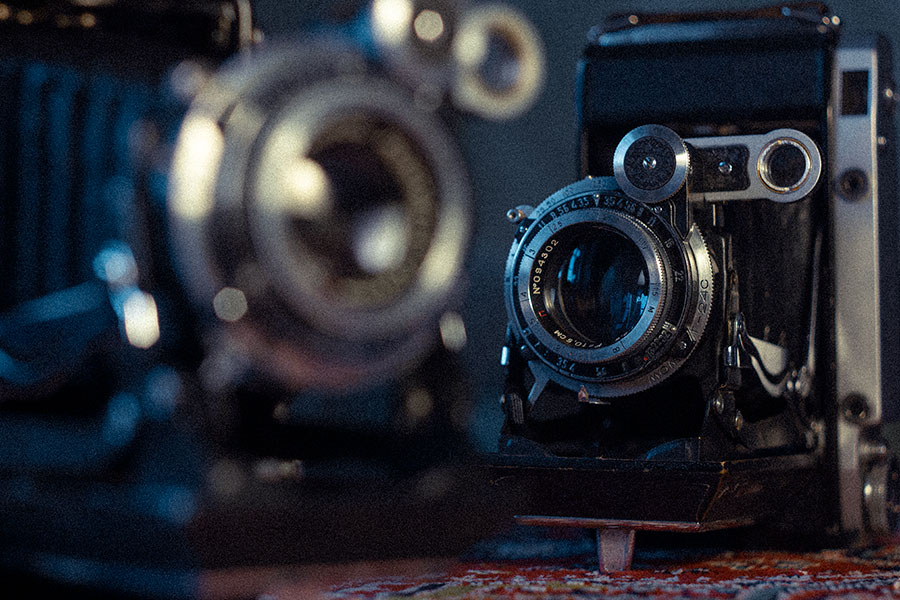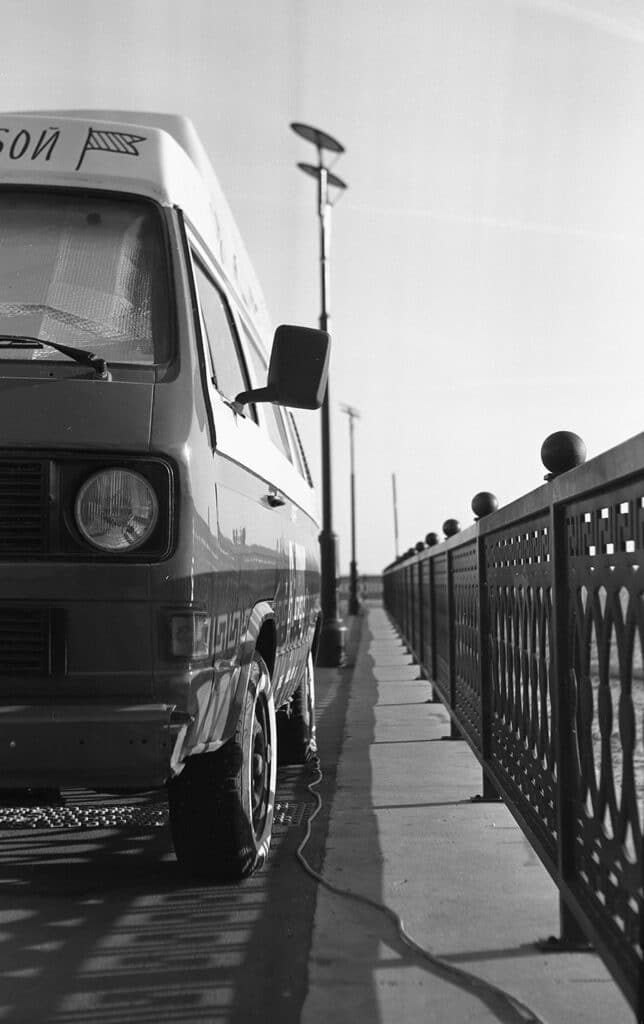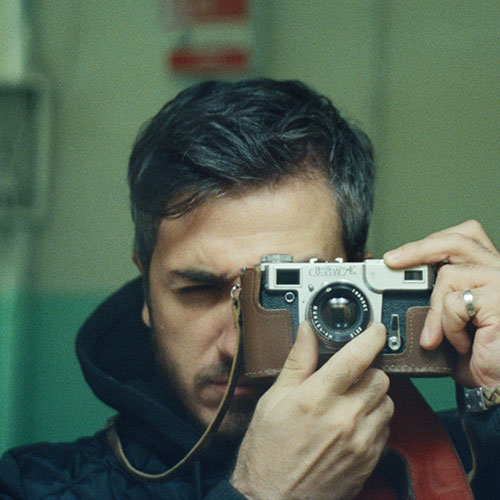Moskva-4 vs Moskva-5
In this detailed article, we decided to compare Soviet medium format cameras Moskva-4 vs Moskva-5 to tell you which one is best for you.

Moskva-4 vs Moskva-5: Introduction
Moskva-4 and Moskva-5 are Soviet rangefinder cameras produced at the Krasnogorsk Plant named after S.A. Zverev (KMZ) in the 1950s. These models are part of the Moskva series, which includes several cameras designed for advanced amateurs and professionals.
They were intended for shooting on 120 medium format film, which made it possible to produce negatives measuring 6×9 cm or 6×6 cm using a special insert. In this comparative article Moskva-4 vs Moskva-5 we will look at the main characteristics, differences and features of these two models.
History of Moskva-4 and Moskva-4 Cameras

The Moskva-4 and Moskva-5, like many other Soviet cameras, were developed during a period when the USSR was actively copying and adapting Western technologies in its engineering and scientific projects. In particular, the design of these cameras was inspired by the German Zeiss Ikon Super Ikonta medium format rangefinder cameras.
Super Ikontas were considered among the best in the world for their build quality, optics and reliability, so it was no surprise that Soviet engineers chose them as prototypes to build their own medium format cameras.
The Moskva-4 was released in the mid-1950s and was a continuation of the Moskva line, inheriting the best features of its predecessors, including a compact folding design for a medium format camera and a rangefinder focusing mechanism.
The Moskva-4 was replaced by the Moskva-5, a model that was presented to the public in the late 1950s. This transition reflected the desire of Soviet manufacturers not only to copy foreign designs, but also to adapt them, making improvements based on their own operating and production experience.
The Moskva-5 offered a number of improvements, including a more simplified focusing system, a lighter Industar-24 lens, and a more convenient and ergonomic layout of controls.
Moskva-4 vs Moskva-5: Detailed Comparison
Let’s conduct a comparative analysis of Moskva-4 and Moskva-5 based on key parameters to identify the features of each model and determine how they influence the choice of camera for potential users.
Lens and Image Quality
Moskva-4: The Industar-23 4.5/110 mm lens featured on the Moskva-4 is an impressive example of optical engineering of its era for a medium format camera. While it might seem somewhat outdated by contemporary standards, this lens is capable of delivering the distinctive medium format aesthetic highly valued by many photographers. Images captured with this lens are characterized by depth, richness, and a unique atmosphere that is emblematic of analog photography from that period. It is perfectly suited for creating portraits with soft bokeh and landscapes with splendid detail, showcasing the unique qualities of medium format imagery.

Moskva-5: The Industar-24 3.5/105 mm lens for the Moskva-5, along with its predecessor, are clones of the renowned Zeiss lenses, ensuring a high standard of quality and characteristics comparable to the original German models. Consequently, users are unlikely to notice a significant difference in image quality between the Moskva-4 and Moskva-5, as both lenses offer similar optical characteristics and are capable of reproducing the same level of detail, contrast, and color rendition. This makes the choice between the two cameras a matter of personal preference and specific needs for certain usability features or additional functions, rather than differences in image quality produced by their lenses.

Shutter Mechanisms
Moskva-4: The Moskva-4 is equipped with the Moment-23 shutter system, offering a reliable range of speeds that cater to a variety of shooting conditions. This system provides photographers with the essential speed settings required for conventional analog photography, from slow exposures to capture motion blur, up to faster speeds for freezing action. While the Moment-23 shutter may not boast the high-speed capabilities found in some contemporary cameras, its performance is more than adequate for the medium format’s rich and detailed imagery. The shutter’s mechanical design is noted for its durability, contributing to the Moskva-4’s reputation as a dependable tool for analog enthusiasts.

Moskva-5: Transitioning to the Moskva-5, we encounter the Moment-24 shutter, a nomenclature shift that might suggest a significant change. However, in practice, the differences between the Moment-23 and Moment-24 shutters are minimal, with no notable impact on the camera’s overall performance or image quality. The Moskva-5 maintains a similar range of shutter speeds, providing photographers with the flexibility to capture a broad spectrum of scenes under varying lighting conditions. The naming convention, while indicative of the model progression, does not translate to a marked improvement or degradation in shutter functionality. Both shutter systems uphold the standards necessary for producing the distinctive medium format visuals, ensuring that either camera can meet the demands of analog photography aficionados.

Camera Bodies
Moskva-4: The body of the Moskva-4 is a direct clone of the German original, embodying the classic aesthetic and robust construction that many photographers admire in vintage cameras. This dedication to replicating the German design extends to its functionality, including the way the back cover swings open like a door, providing access to the film plane. This design choice, while offering a nod to the camera’s heritage, might present a more traditional approach to film loading and unloading. The Moskva-4’s body, with its classic lines and solid construction, appeals to those who appreciate the tangible connection to the history of photography and the craftsmanship of an era when cameras were as much a work of art as the images they created.

Moskva-5: In contrast, the Moskva-5 introduces more original features in its body design, moving slightly away from its strict clone roots towards a more user-friendly and modern construction. Notably, the back cover of the Moskva-5 is designed to be completely removable, facilitating easier access to the film and simplifying the process of film loading and unloading. This design evolution reflects a shift towards convenience and practicality, making the Moskva-5 slightly more appealing to those who value ease of use alongside performance. Despite these modern touches, the Moskva-5 still retains a vintage charm, blending original design elements with improved functionality to meet the needs of contemporary photographers who also have an appreciation for the aesthetic of the past.

Camera Functionality
Moskva-4: The Moskva-4 harks back to the classic era of folding cameras from the 1930s and 1940s, with its functionality deeply rooted in the traditions of that time. It embodies the essence of simplicity and mechanical reliability that are hallmarks of vintage photography equipment. Key features include a shutter release button positioned on the left side of the body, a common design choice of the era that might require some adaptation for modern photographers used to different layouts. The camera also incorporates a double exposure prevention mechanism, safeguarding against the accidental superimposition of images. The opening mechanism for the bellows and the film winding process mirror the classic operations, providing an authentic analog experience. One distinctive feature of the Moskva-4 is its classic Zeiss Ikonta-style pop-up viewfinder, which, while offering vintage charm, may not appeal to all users due to its more traditional and less convenient design compared to modern standards.

Moskva-5: Transitioning to the Moskva-5, we see a continuation of the classic functionality inherent to the folding cameras of the mid-20th century, yet with subtle improvements aimed at enhancing user experience. The Moskva-5 retains the left-side shutter release button, double exposure prevention, and similar mechanisms for bellows extension and film winding, ensuring continuity in the operational feel between the two models. However, a significant departure from the Moskva-4 is found in the viewfinder design. The Moskva-5 features a fixed viewfinder, which represents a shift towards user-friendliness and speed in composition, addressing some of the ergonomic challenges presented by the pop-up viewfinder of its predecessor. This fixed viewfinder makes the Moskva-5 slightly more accessible for quick shooting scenarios. Nonetheless, this model introduces a limitation: the inability to accommodate screw-on filters or lens hoods, which restricts photographers from easily employing these accessories to manipulate lighting conditions or prevent lens flare, a feature that might be missed by those accustomed to the versatility of the Moskva-4 and other vintage cameras.

Ease of Use
Moskva-4: Reflecting the essence of photography from the early 20th century, the Moskva-4 embraces a classic control layout that necessitates a thoughtful and measured approach to capturing images. Users of this camera are invited to engage in a slow, almost meditative process of photography, where each adjustment and decision is made deliberately. This approach to shooting, reminiscent of the practices of past photographers, requires patience and precision, often benefiting from the stability provided by a tripod and the accuracy of a cable release. The experience of using the Moskva-4 is a nod to the past, appealing to those who appreciate the art of photography as much as the final image.

Moskva-5: While the Moskva-5 retains the classical approach to photography found in the Moskva-4, it introduces slight refinements that offer a touch more convenience to the photographer. The most notable of these is the inclusion of a fixed viewfinder, eliminating the need to pop up the viewfinder before each shot. This modification, though minor, streamlines the shooting process, making it slightly more straightforward without compromising the manual and intentional experience characteristic of both cameras. The recommendation to use a tripod and cable release remains, underscoring the deliberate nature of the photography process with these cameras. The Moskva-5, with its subtle modern touches, provides a marginally more user-friendly experience, still deeply rooted in the traditional, hands-on approach to capturing photographs.

Photo Examples
So now let’s look at why we buy these vintage cameras in the first place, that is, the photographs they produce. As stated above, both cameras show very similar results, and we did not notice any significant differences in the quality of the final shots.
Moskva-4 Photo Examples
Moskva-5 Photo Examples
Moskva-4 vs Moskva-5: Conclusion
Although the differences between Moskva-4 and Moskva-5 may seem small at first glance, each has unique features that make it preferable depending on the photographer’s individual preferences.

The Moskva-4, with its more traditional approach and design, is an excellent choice for those seeking authenticity and wanting to get closer to the experience of the original Zeiss Ikon.
This camera’s ability to capture the spirit of an era and provide a unique shooting experience that is treasured by analogue photography enthusiasts is what makes this camera appealing.
At the same time, Moskva-5 offers a little more convenience and functionality while maintaining a classic approach to photography.
With improved ergonomics, this model is the ideal choice for photographers who are looking not only for image quality, but also a little more comfort to use.
Thus, the choice between Moskva-4 and Moskva-5 largely depends on the personal preferences of the photographer and what he is looking for in a camera. If you value an original experience and authenticity reminiscent of the classic Zeiss Ikon, then Moskva-4 will be your ideal companion. However, if you prefer additional convenience, Moskva-5 will offer you exactly that, making the photography process even more enjoyable and productive.

















